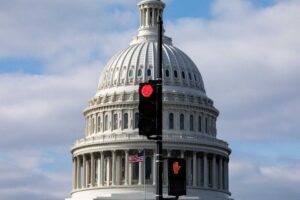
A recent outbreak of Legionnaires’ disease in Harlem has prompted New York City lawmakers to propose new legislation aimed at increasing testing frequency for building cooling towers, which are known to spread the disease. This summer’s outbreak resulted in the deaths of seven individuals and hospitalizations of 90 others. The proposed legislation would require building owners to conduct tests for *Legionella* bacteria every 30 days, a significant reduction from the current requirement of every 90 days, and every 14 days during heat-related emergencies.
While the increased testing frequency is seen as a positive step, public health experts warn that simply testing more often does not address the underlying issues. According to Abraham Cullom, director of water safety and management at Pace Analytical, the focus on testing overlooks critical maintenance practices. Cullom pointed out that building owners often test their cooling towers immediately after cleaning, which can produce misleading results. “You can throw as much testing at this as you want,” Cullom stated. “If you’re not doing other things that are actually controlling Legionella, the testing itself isn’t going to protect anyone.”
Public health officials emphasize that testing should ideally occur before cleaning to provide a more accurate representation of the water quality. Janet Stout, a professor at the University of Pittsburgh and a leading expert on waterborne diseases, recounted an instance where her lab rejected a sample that had a strong chlorine smell, indicating it was collected right after cleaning. “When you test after a cleaning, all it does is confirm that you’ve cleaned the tower,” Stout explained. She advocates for more regular monitoring, suggesting that building owners should check their cooling towers weekly, if not daily.
City Councilmember Lynn Schulman, who coauthored the legislation, has not indicated whether there will be additional measures beyond increased testing. The City Council is set to hold an oversight hearing regarding the response to this summer’s outbreak on Friday. Currently, city laws require building operators to monitor the chemical and bacteriological content of their cooling tower water, but they are only obligated to report *Legionella* test results every 90 days.
Former city health official Don Weiss believes that more frequent reporting would enhance the city’s ability to identify conditions conducive to *Legionella* growth. He proposed that the health department should require daily or weekly test results, similar to the city’s existing system for tracking communicable diseases. “It would probably be a bit of an expense,” Weiss noted. “But once you set the system up, it would work seamlessly.”
Cooling towers play a crucial role in building heating and cooling systems. Positioned typically on rooftops, they circulate water that absorbs heat from the building’s interior. As this water returns to the cooling tower basin, fans evaporate the warm water, creating conditions that can foster *Legionella* bacteria. If this bacteria becomes airborne, it can lead to Legionnaires’ disease upon inhalation.
Following a previous outbreak in 2015, New York City implemented regulations mandating that all building owners register their cooling towers, hire professionals for management, and develop maintenance plans. These laws also empower the city health department to inspect cooling towers and ensure compliance with routine testing and cleaning records.
However, a recent analysis by Gothamist revealed that in the months leading to this summer’s outbreak, the health department was on track to conduct fewer than half the inspections compared to 2017. Approximately 30% of the approximately 5,000 registered cooling towers had not been inspected since 2023. The health department cited a shortage of inspectors as the reason for this decrease. Despite increased funding, there were fewer water ecologists available this year than in 2022 at the start of the Adams administration.
At a press conference in late August, Health Commissioner Michelle Morse assured that the city had sufficient staff to respond to the outbreak but acknowledged the need to enhance recruitment efforts for inspectors. Stout emphasized the importance of regular inspections to ensure that building owners adhere to proper maintenance practices rather than just meeting minimum reporting requirements. “Someone has to be looking over their shoulder,” she said. “Perhaps the better answer is to better fund public health so it can do more inspections.”
As New York City grapples with the aftermath of the outbreak, the proposed changes to testing regulations will be closely monitored to determine their effectiveness in preventing future occurrences of this deadly disease.






